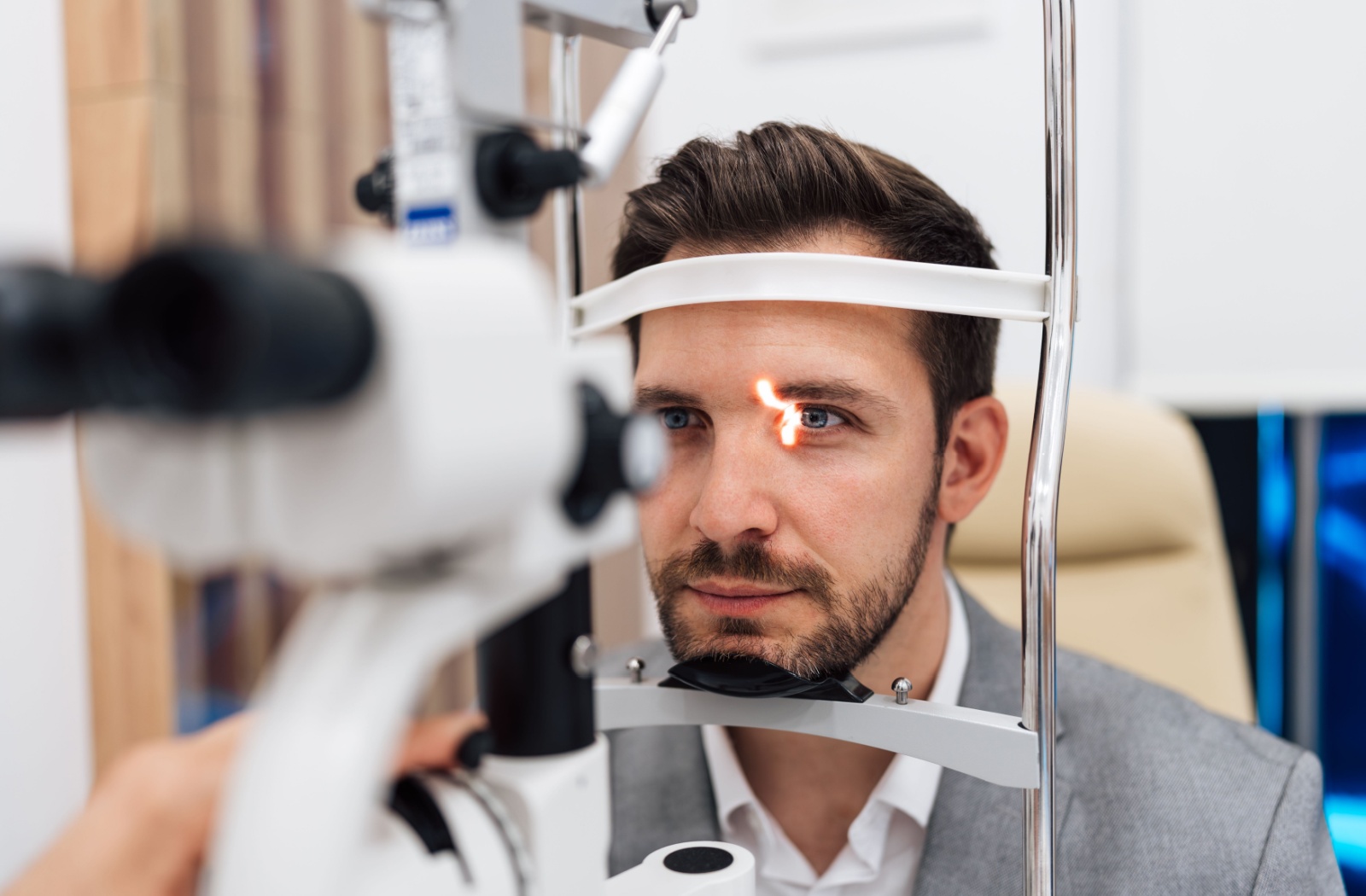
Many people assume their eyeglasses and contact lens prescriptions are interchangeable, but that’s not the case. While both types of prescriptions aim to correct your vision, they’re written differently due to how each lens sits on your eye. Glasses rest slightly away from your eyes, while contact lenses are placed directly on the surface of the eye. This difference in distance, called vertex distance, can significantly affect the lens power needed; especially for stronger prescriptions.
Contact lens prescriptions also include extra measurements you won’t find on a glasses prescription, like base curve and lens diameter. These factors help determine how the lens fits and moves on your eye, which directly impacts comfort and eye health. You may also need a different prescription strength when switching between glasses and contacts.
If you're thinking about transitioning to contact lenses or just want to understand the differences in your vision correction options, it’s important to have a comprehensive fitting and evaluation. Using the wrong prescription, especially one not intended for contacts, can lead to discomfort, blurry vision, or even eye irritation.
At ProVision, our experienced team takes the time to fit both glasses and contacts based on your individual needs. We’ll help you understand the numbers in your prescription, discuss the right lenses for your lifestyle, and help make sure your vision stays clear and comfortable.
Are Contact Lens & Eyeglasses Prescriptions the Same?
If you’ve recently had an eye exam and received a glasses prescription, you might wonder if you can use it to order contact lenses. While they seem similar, contact lens and eyeglasses prescriptions are not the same. They serve different purposes and are based on different measurements.
Understanding the differences can help you make informed decisions about your eye care and get the most accurate vision correction; especially if you rely on both glasses and contacts to get through your day.
Can I Get Contacts with My Glasses Prescription?
Glasses prescriptions measure how much correction your eyes need when lenses are placed in front of them; usually about 12 millimeters from the surface. Contact lenses sit directly on your eyes, which changes how the correction is calculated.
In lower prescriptions, there may be very little difference between glasses and contact lenses. But once your prescription exceeds around ±3.50 diopters, the difference becomes more noticeable. That’s because of something called vertex distance, the gap between your glasses and your eyes. Contact lenses require this difference to be factored into the power of the lens so your vision stays sharp.
It’s also important to remember that contact prescriptions include more than just power. They add:
Base curve – to match the curvature of your cornea
Diameter – for correct lens size and fit
Brand or material – depending on what your eyes tolerate best
These additional values aren’t found on a glasses prescription, which is why you can’t use one interchangeably for both.
Convert Contact Prescription to Glasses (Or the Other Way Around)
It’s common to wonder if you can convert a contact lens prescription into a glasses one; or vice versa. While there are some general guidelines, it’s not a direct one-to-one swap.
From Contacts to Glasses
If your contact lens prescription is mild, the power for glasses may be nearly identical. But for higher prescriptions, the glasses power often needs to be adjusted upward. For example, a –6.00 diopter contact lens prescription might convert to about –6.50 for glasses.
That slight increase accounts for the distance glasses sit from your eyes, which changes how light enters. It may seem like a small change, but even a quarter of a diopter can impact visual clarity, especially for tasks like driving or reading signs at a distance.
From Glasses to Contacts
When moving from glasses to contact lenses, the opposite adjustment happens. A strong glasses prescription may need to be reduced slightly for a contact lens to work properly on the eye’s surface.
That said, even with accurate power conversions, you’d still be missing other crucial details, like the fit of the lens on your eye. So even if a chart gives you a rough estimate, a professional contact lens fitting is still necessary to prevent discomfort or blurry vision.
Why the 2 Prescriptions Are Different
A glasses prescription only needs to correct your vision at a distance. Since the lenses don’t touch your eyes, comfort and movement directly on your eyes aren’t part of the equation.
Contact lenses, on the other hand, need to:
Stay in place without causing irritation
Allow oxygen to pass through to your cornea
Work with your blinking and tear film
Fit the shape of your eye without sliding or drying out
This is why contact lens prescriptions include specific design features, and why trial fittings are often part of the process. For example, someone with dry eyes might need a particular lens material, while someone with a steep cornea might need a different base curve entirely.
Common Misconceptions
Many people believe that once they have a glasses prescription, they can just order contacts online. But without a proper fitting and evaluation, that decision can lead to:
Discomfort
Blurry or fluctuating vision
Dryness or irritation
Increased risk of infection
Even slight mismatches in lens size or shape can cause problems over time. Contact lenses that don’t fit properly can lead to corneal abrasions, inflammation, or serious infections. That’s why separate exams and measurements are necessary. Even 2 people with the same glasses prescription might need different contact lens types based on the shape and health of their eyes.
What to Do if You Need Both
If you wear glasses and want to try contacts, or already use contacts and need new glasses, it’s helpful to have both prescriptions up to date.
Your optometrist can evaluate:
Your corneal shape and health
Your tear production
Which materials your eyes tolerate best
How your eyes respond to different lens designs
Once both prescriptions are confirmed, you’ll have the flexibility to switch between glasses and contacts comfortably and safely. Some patients prefer contacts for everyday use and keep glasses on hand for reading or giving their eyes a break in the evening. Having both options can make your routine more convenient and comfortable.
Why Prescription Accuracy Matters
Understanding why contact lens and glasses prescriptions are different can help you avoid mistakes and choose the right correction for your lifestyle.
Contacts need a more detailed approach to fit, power, and comfort. Glasses are simpler in structure but still require accuracy for best results. Trying to convert one into the other without professional input can lead to vision problems and discomfort, sometimes more serious than people expect.
If you’re unsure about your prescriptions or considering a switch, schedule a comprehensive eye exam with our team at ProVision. Our optometrists can provide both prescriptions based on how your eyes function; and make sure you get the clearest, most comfortable vision possible. Investing a little extra time in professional guidance can lead to better visual clarity, healthier eyes, and fewer frustrations in your day-to-day life.










